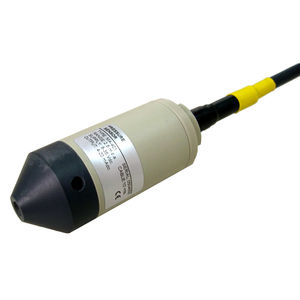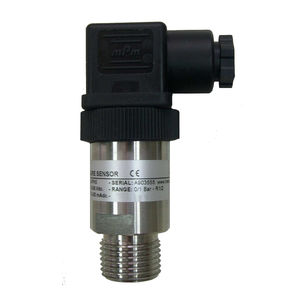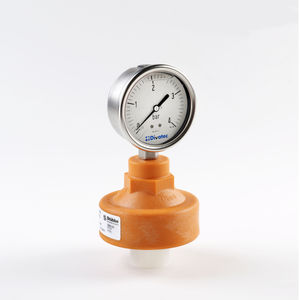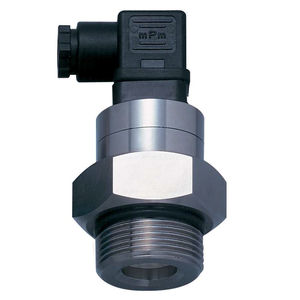
Piezoresistive level transmitter DV403for liquidssubmersiblehigh-precision


Add to favorites
Compare this product
Characteristics
- Technology
- piezoresistive
- Medium
- for liquids
- Other characteristics
- submersible, high-precision
- Process pressure
Max.: 10 bar
(145.04 psi)Min.: 0 bar
(0 psi)
Description
• Hydrostatic level measurement
• Outside diameter: 23 mm.
• Measuring sensor: ceramic
• Cable with steel port and compensation tube
Description
This series of submersible pressure transmitters, made of polypropylene of 40 mm. in diameter they are suitable for continuous measurement of hydrostatic level and are designed to withstand immersion in aggressive fluids, even marine.
Submersible level probe has a wide range of fixed measuring ranges from 0 … 250 mbar to 0 … 10 bar (on demand is supplied with the appropriate range for each installation).
GENERAL CHARACTERISTICS
• Ceramic sensor with high precision and long-term stability
• Resistance to climatic changes due to its encapsulated electronics and a system of
pressure compensation
• Output signal: 4 ÷ 20 mAdc.
• It is supplied as standard with 10 meters. of cable mod. CS-700 or CS-800 (on request it is supplied with additional lengths suitable for each installation)
• The cable mod. CS-700 or CS-800 that is part of the meter set has a double sealing chamber with a reference tube to balance the outside atmospheric pressure and a braided steel cable that acts as a guard against tensile stresses
•Protection against voltage overloads
• Repairable level probes
Technique used
The measurement sensor of the submersible pressure transmitter is made of ceramic, the piezoresistive technique being used.
Catalogs
No catalogs are available for this product.
See all of DIVATEC,SL‘s catalogsRelated Searches
- Flowmeter
- Liquid flowmeter
- Level limit switch
- Pressure transmitter
- Pressure gauge
- Liquid level limit switch
- Level probe
- Liquid level probe
- Analog pressure transmitter
- Gas flowmeter
- Analog pressure indicator
- Pressure probe
- Membrane pressure transmitter
- Float level switch
- Relative pressure transmitter
- Stainless steel pressure transmitter
- Analog level probe
- Threaded pressure gauge
- Water flowmeter
- Level transmitter
*Prices are pre-tax. They exclude delivery charges and customs duties and do not include additional charges for installation or activation options. Prices are indicative only and may vary by country, with changes to the cost of raw materials and exchange rates.







